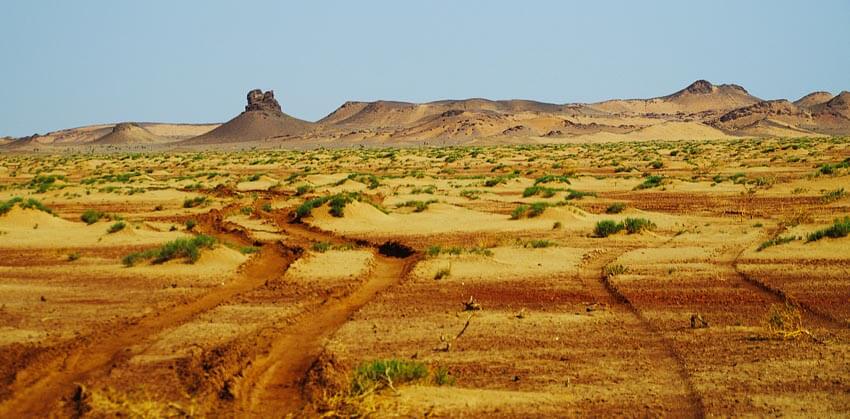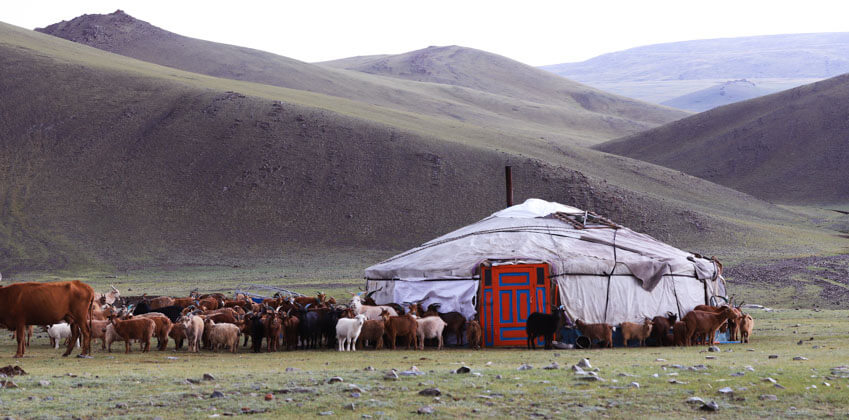Driving in Mongolia as a Foreigner
Mongolia is known for its breathtaking landscapes, endless steppes, and nomadic culture. For adventurous travelers, driving through the country offers an unparalleled way to experience its remote beauty. However, the experience is not without challenges, especially for foreigners unfamiliar with the country’s unique road conditions, legal requirements, and cultural norms.
Here’s what you need to know before hitting the road in Mongolia
Written by Kanishka Sonnadara
As a Canadian, and someone who's driven cars and ridden motorbikes all over the world, Mongolia isn't the most challenging place to drive, but can be very close. It's a definite exercise in infinite patience, common sense, and keeping calm under pressure.
Legal Requirements for Foreign Drivers in Mongolia
Foreigners planning to drive in Mongolia must at minimum have an International Driving Permit (IDP), along with a valid driver’s license from your home country. Make sure your IDP matches the vehicle type you intend to drive, and most importantly, that your IDP is issued by a country signed on to the same international driving convention as Mongolia.
Mongolia’s recognition of IDPs depends on which international road traffic convention your home country has signed. Mongolia is a party to the 1968 Vienna Convention on Road Traffic, so IDPs issued under this convention are accepted.
However, IDPs issued under the 1949 Geneva Convention on Road Traffic may not be valid in Mongolia unless accompanied by a notarized Mongolian translation of your home country’s license. Some countries, like the United States and Canada for example, issue IDPs under the 1949 Geneva Convention, making them not recognized in Mongolia.
To ensure compliance:
1. Confirm which convention your country adheres to and which type of IDP is issued. Countries and driving licenses eligible to drive in Mongolia
2. If your IDP is not recognized, arrange for a notarized Mongolian translation of your license before arriving.
3. Carry your original driver’s license alongside your IDP or translated document at all times.
This added complexity sets Mongolia apart from countries like Australia, where both 1949 and 1968 IDPs are widely accepted without additional translations. Understanding these nuances can save you time and trouble when planning your road trip.
Additionally, car insurance is mandatory, and if you can find a rental agency willing to rent a vehicle to a foreigner (more on this later), it will include basic coverage. If you plan on driving your own car across borders, you’ll also need documentation proving ownership, a Carnet de Passage (for customs clearance), and potentially a Mongolian visa for your vehicle. These processes can be arduous, and time-consuming, so planning ahead and having sufficient resources is crucial.

Road Rules vs. Road Use Norms of Mongolia
In theory, Mongolian traffic laws resemble those of many developed countries. For instance:
Drivers must drive on the right-hand side of the road.
Speed limits are typically 60 km/h in urban areas and 80–100 km/h on highways.
Seatbelts are mandatory for front-seat passengers.
Drunk driving is strictly prohibited, with zero tolerance for alcohol.
In practice, however, the reality can be very different. Traffic in cities like Ulaanbaatar is chaotic, with drivers often disregarding rules such as lane discipline, traffic lights, or right-of-way. Horns are used liberally, not just to warn but to communicate intentions. In rural areas, roads are often unmarked dirt tracks, and “rules” tend to be replaced by common sense and courtesy.
This contrasts starkly with driving in developed countries like Germany, where the autobahns have a reputation for precise adherence to rules, or the United States, where signage and infrastructure are designed to guide even the most inexperienced drivers.

Language Barriers and Navigation Challenges While Self Driving Mongolia
For many foreigners, the language barrier is a significant obstacle. Most road signs in Mongolia are in Cyrillic only, and English translations are rare outside of Ulaanbaatar. While major highways may have basic signage, rural routes often lack even the most rudimentary markers. This makes navigation challenging, particularly for those unfamiliar with GPS systems like Maps.me, which are better suited to the Mongolian countryside than Google Maps. Even then, the best navigation system in the countryside is a driver who's been there before.
Unlike in countries like Japan, where road signs are consistently bilingual, or Sweden, where navigation apps integrate seamlessly with local transport systems, driving in Mongolia demands a greater degree of preparation and adaptability.
Driving in Mongolia, especially as a foreigner, will guarantee interaction with local authorities, service providers, and other locals. While police and officials are professional, and things like bribes nearly unheard of on local roads, you will need to be able to understand and follow their instructions. Even a simple task like filling your tank with petrol (or diesel) can be daunting if you can't speak the language.
Infrastructure: From City Streets to Remote Trails
Driving in Ulaanbaatar presents a mix of modern infrastructure and congestion issues. Potholes are common, even on main roads, and traffic jams are an all day occurrence. Outside the capital, the situation changes dramatically. Most roads are unpaved, and long stretches of the countryside lack cell coverage, gas stations, or repair shops.
Foreigners used to well-maintained roads in places like the UK or Canada may find the rugged conditions of Mongolia daunting. River crossings without bridges, sudden storms, and encounters with livestock are common. On the flip side, these challenges are part of what makes driving in Mongolia such an adventure.
Cultural Norms and Unique Experiences
Mongolian drivers tend to have a pragmatic approach to road use. You’ll notice a camaraderie among drivers in remote areas, where sharing fuel, tools, or advice is common. However, in urban settings, patience is required as driving etiquette can seem aggressive.
One striking difference compared to developed countries is the lack of road service infrastructure. Where an American driver might call AAA for roadside assistance, in Mongolia, you’ll likely rely on the kindness of passing locals or your own resourcefulness.

Tips for a Successful Mongolian Road Trip
Plan Ahead: Research your route thoroughly and consider hiring an English speaking local guide for off-road adventures. Hiring a car with a driver is usually the best option, and strongly advised for anyone's first time in Mongolia.
Vehicle Choice: A sturdy 4x4 is essential for navigating rural areas. Otherwise sedans or vans are more comfortable for city or intercity travel.
Stay Connected: Invest in a local SIM card with data for navigation and emergencies.
Learn Basic Phrases: Knowing a few key phrases in Mongolian can be invaluable for when you inevitably lose cell signal in the vast Mongolian countryside. Expect Delays: Weather, road conditions, and unexpected encounters will often slow you down.
Conclusion
Driving in Mongolia is not for the faint-hearted, but for those who embrace its challenges, it offers unparalleled freedom and an intimate connection with the land and its people. Unlike the predictability of driving in developed countries like Australia or Norway, Mongolia’s roads invite you to embrace the unpredictable and the adventurous. Whether you’re crossing vast deserts or parked in endless traffic in bustling city streets, driving in Mongolia is an experience you’ll never forget.